This is a post featuring two photo locales that share the same name but are not associated in any way. Vermilion Crossing is a location on the Kootenay River at a point where the river crosses Highway 93, in the Kootenay Valley of British Columbia. It is in the Kootenay National Park about 120 km (75 miles) by road from Canmore. The Vermilion Lakes are at the Town of Banff, in Banff National Park, only about 25 km (15 miles) from home. It is coincidental that I visited and photographed both locations on the same day.
I set out early, accompanied by Bob Bear and Ward Westgate on the approximate 1 hour trip to Vermilion Crossing, a small rest stop on the route to Radium B.C. and the Columbia River Valley. There is a convenience store and the Kootenay Park Lodge for visitors who might choose to linger. We were there to photograph the Kootenay River and the surrounding mountains. The weather wasn’t great for photography, overcast skies and flat light so we chose to devote our attention primarily to the river itself. I begin with a picture looking westward along a short stretch of the river flowing east to west. In the foreground is the highway bridge crossing the river; in the background are Mount White Tail (left) and Mount Verendrye (right). Despite the flat light, the autumn colours and the blue of the water show well.
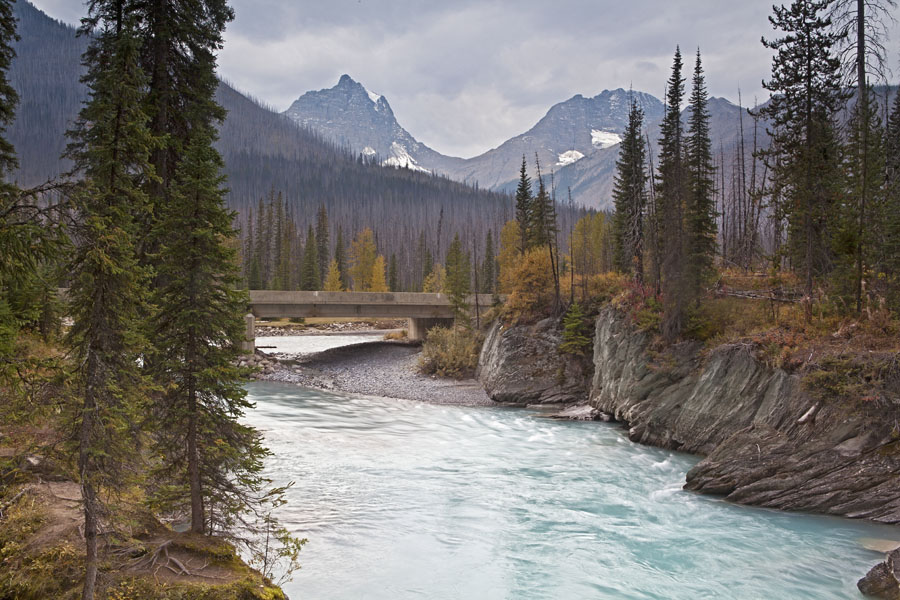
I couldn’t help but notice the fascinating rock form on the opposite bank of the river and took a picture focused on the bank itself. The rock here is sedimentary with the banks exposed by the river’s erosive action. You can see the discreet layers of rock in the lower left hand corner of the image.
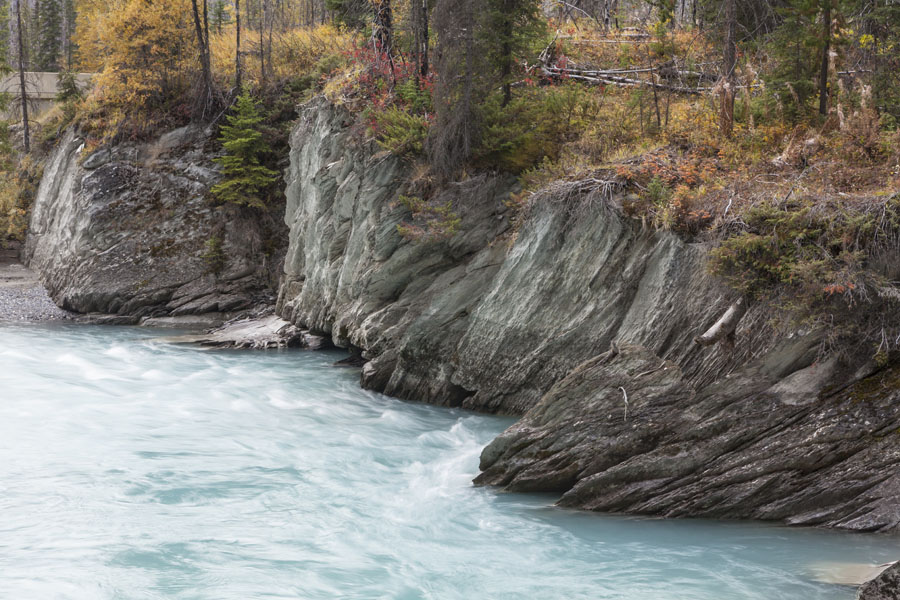
There is a lot of shale present in these layers of rock. My next picture is a good example of very fine grained shale. You can see pieces that have broken off, very thin and sharp-edged. Shale is a fine-grained, sedimentary rock, composed of mud that is a mix of flakes of clay minerals and tiny fragments (silt-sized particles) of other minerals, especially quartz and calcite. Shale is characterized by breaks along parallel layering less than one centimeter in thickness. (Description courtesy of Wikipedia)
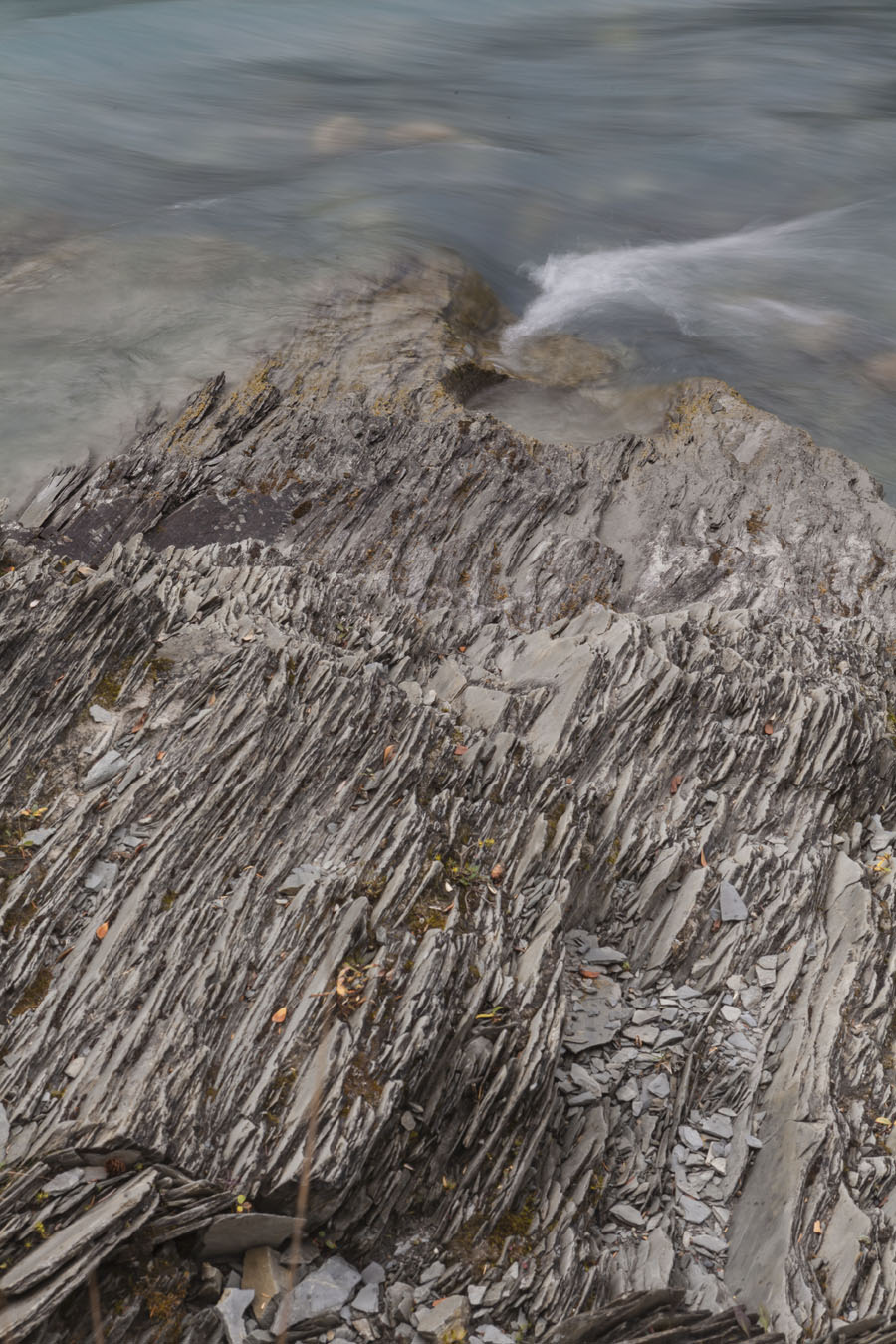
This next photo shows another good example of the sedimentary basin containing the Kootenay River. But, I took the picture because it was eye-catching and colourful. I like the lines in the rock, the colours of course, and the opacity of the water which allows just a glimpse of the underlying river bed. The water is murky due to the content of suspended rock flour, fine dust from upstream glaciers grinding the rock beneath them.
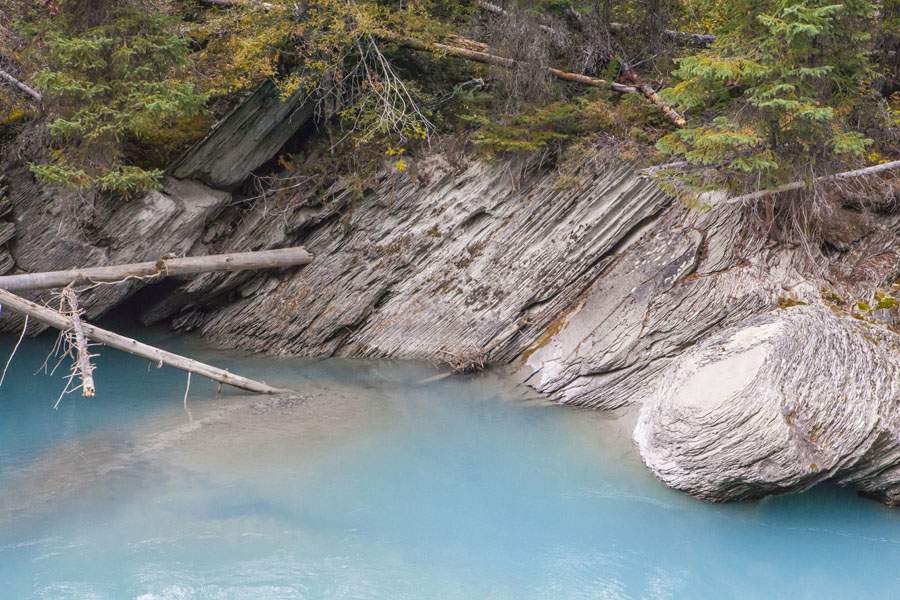
One last look at Vermilion Crossing, a shot taken looking eastward along the Kootenay River toward Hawk Ridge. This picture offers a lot of things; more great rock forms, the autumn colours, the aqua blue water and the aftermath of a forest fire. A lot of the terrain in this area bears the scars of wildfires. The initial thought is “What a shame to see this beautiful country ravaged.” But it is a natural process, as is its regeneration. After awhile, it becomes familiar and you can see a stark beauty in it, particularly when you see the bright colours of autumn, evidence of new growth emerging from the ashes.
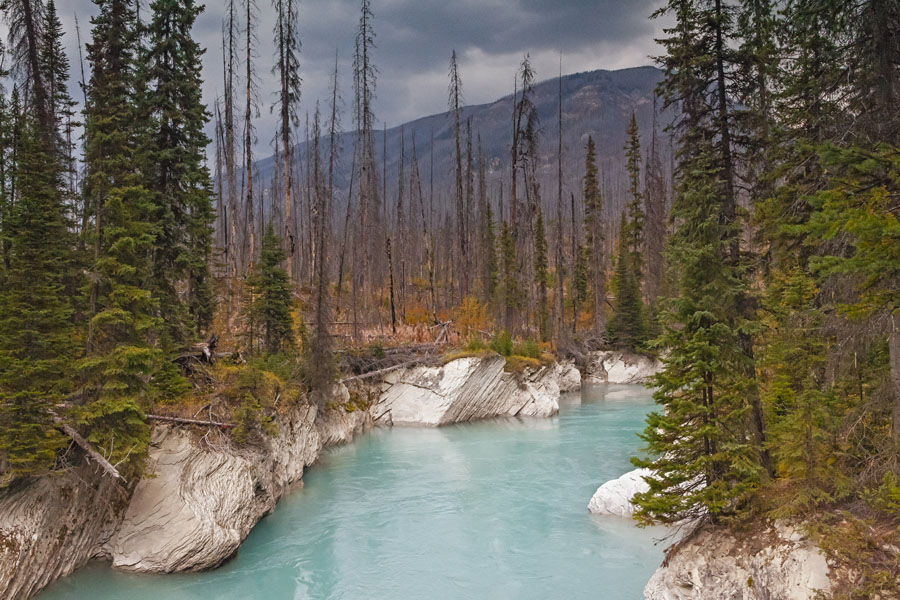
I won’t dwell on the Vermilion Lakes, I’ve posted many shots from there in the past. The weather and the light was changing as we drove past on the way home, so we chose to stop and take some pictures at this well-photographed site. The first picture is a view down the Bow Valley toward the west. Those are not dust specks on my lens that you see on the water. They’re ducks!
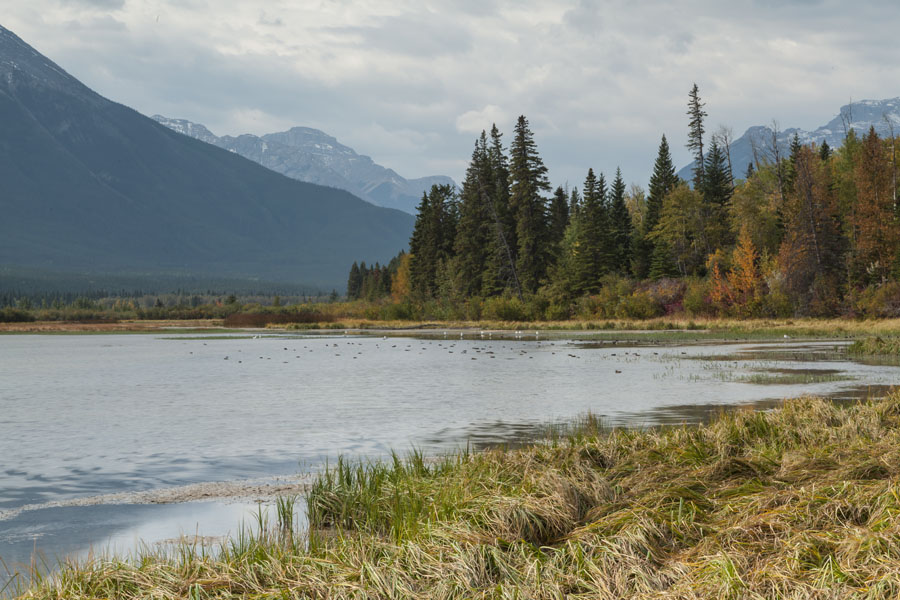
That’s Mounft Rundle beyond the second Vermilion Lake. I’ve photographed this scene many times, summer and winter but never with this particular light. The picture was taken just past noon. The sunlight was coming from south-southeast, almost inline with the ridge atop Mount Rundle. My position was west-northwest of Mount Rundle, putting me at an angle of 135 degrees to the direction of the sun. From this angle, the mountain is essentially backlit and appears very shadowy. Most of the rest of the scene can be seen from a more favourable angle. The lake, the grasses in the foreground and the clouds on the left side of the picture are getting more direct light and show very distinctly on the photograph. I aimed the camera as far left as I could to minimize the backlighting of the scene but without compromising the composition. The result is a blend of some clear and some obscure elements and some very strong contrast between light and dark areas of the picture. I’m pleased with it and I’m glad to share it with you.
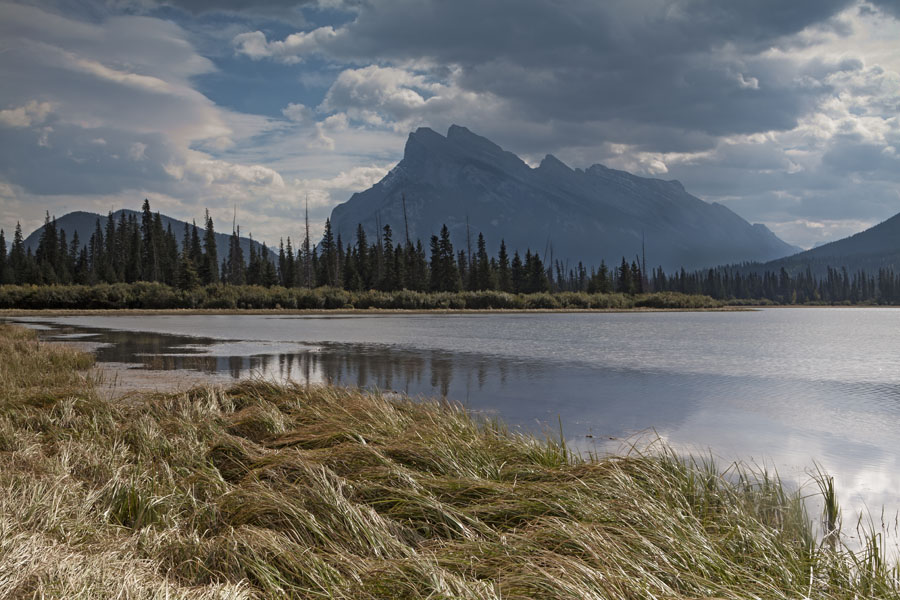
Another great day. Thanks, Bob and Ward.

Beautiful pics!
Love the ruggedness of the shale and softness and colours of the shrubs and plants, and water.
I particularly enjoyed the last shot of Mt. Rindle. Really a beautiful composition!